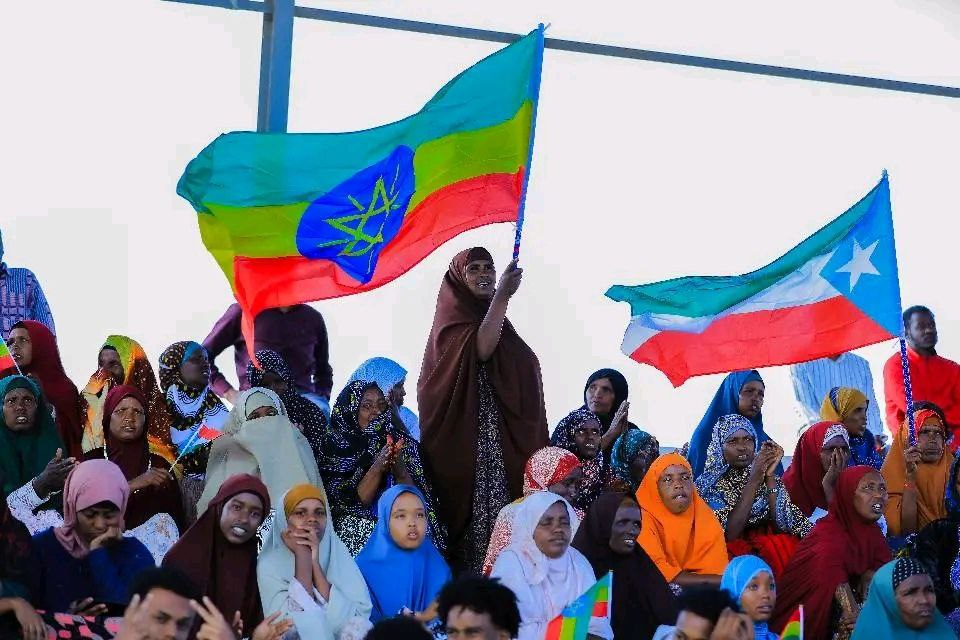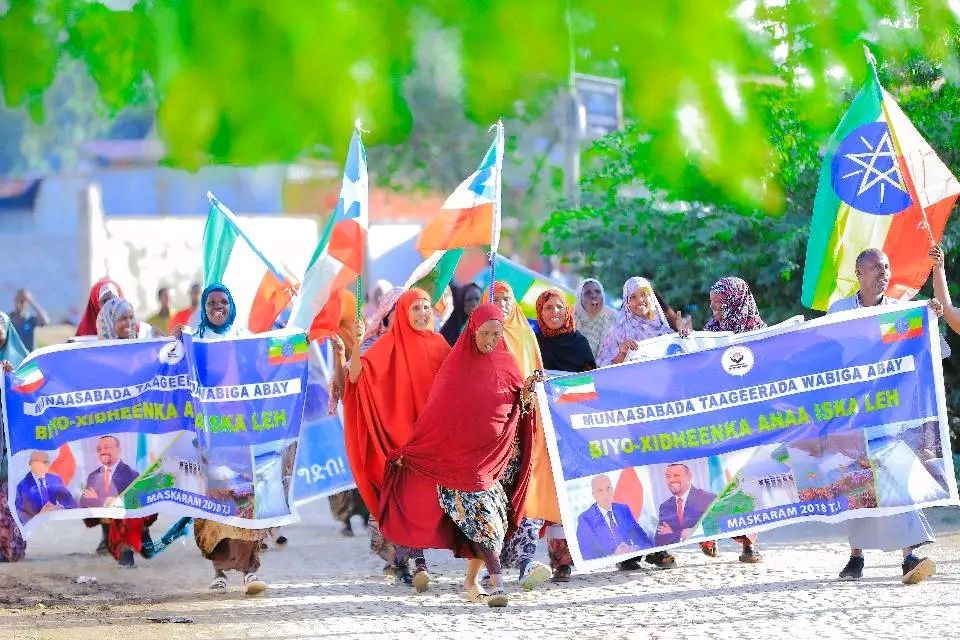Thousands gathered in Jigjiga, the capital of Ethiopia’s Somali Region, to celebrate the completion of the Grand Ethiopian Renaissance Dam (GERD), a monumental project hailed as a symbol of national unity and development.
The support demonstration, marked by vibrant displays of pride and solidarity, underscored the dam’s significance in accelerating Ethiopia’s journey toward prosperity.
Somali Region President Mustefe Muhammed, addressing the enthusiastic crowd, emphasised the dam’s role in fostering national understanding and economic growth.

“The great Ethiopian Renaissance Dam is a great project that boosts national understanding,” President Mustefe declared during his speech.
He highlighted the dam’s completion as a historic milestone, stating, “The Renaissance Dam will help accelerate the development and prosperity journey that has been started in our country, so the completion of the project is great news for all Ethiopians who have been waiting eagerly.”
Mustefe credited the leadership of Prime Minister Abiy Ahmed and the unwavering support of the Ethiopian people for bringing the project to fruition, noting,
“The dam has been started from the time it was started to the completion, but with the support of the Prime Minister Abiy Ahmed (Dr.) and the uninterrupted support of the Ethiopian people, it has finally come to an end.”
The GERD, located on the Blue Nile River in Ethiopia’s Benishangul-Gumuz Region, is Africa’s largest hydroelectric dam, with a capacity to generate 6,450 megawatts of electricity.
Initiated in 2011, the $4.8 billion project has been a cornerstone of Ethiopia’s ambition to become a major energy producer and exporter in the Horn of Africa.
The dam aims to provide reliable electricity to millions of Ethiopians, support industrial growth, and enable energy exports to neighbouring countries, while also addressing water management needs.
However, the project has faced challenges, including diplomatic tensions with downstream nations like Egypt and Sudan over water sharing, as well as financing and construction delays. Despite these hurdles, Ethiopia’s commitment to self-funding the dam through domestic resources, including public contributions and bonds, has made it a powerful symbol of national resilience.
President Mustefe emphasized the dam’s broader significance, stating,
“The completion of the renaissance is our legacy of development that shows that we Ethiopians can make history when we stand together as a people.”
The Jigjiga demonstration reflected this unity, with participants celebrating the dam’s potential to transform Ethiopia’s economy and enhance regional cooperation.
The event also highlighted the Somali Region’s alignment with national development goals, mirroring efforts in other regions, such as Afar’s International Dates Festival, which showcased agricultural potential.
The completion of the GERD marks a new chapter for Ethiopia, promising to boost energy security, drive industrialization, and strengthen national pride.
As celebrations continue across the country, the dam stands as a testament to Ethiopia’s collective determination to shape a prosperous future, with the rally in Jigjiga, the Somali Region, embodying the shared optimism and hope for a thriving nation.

